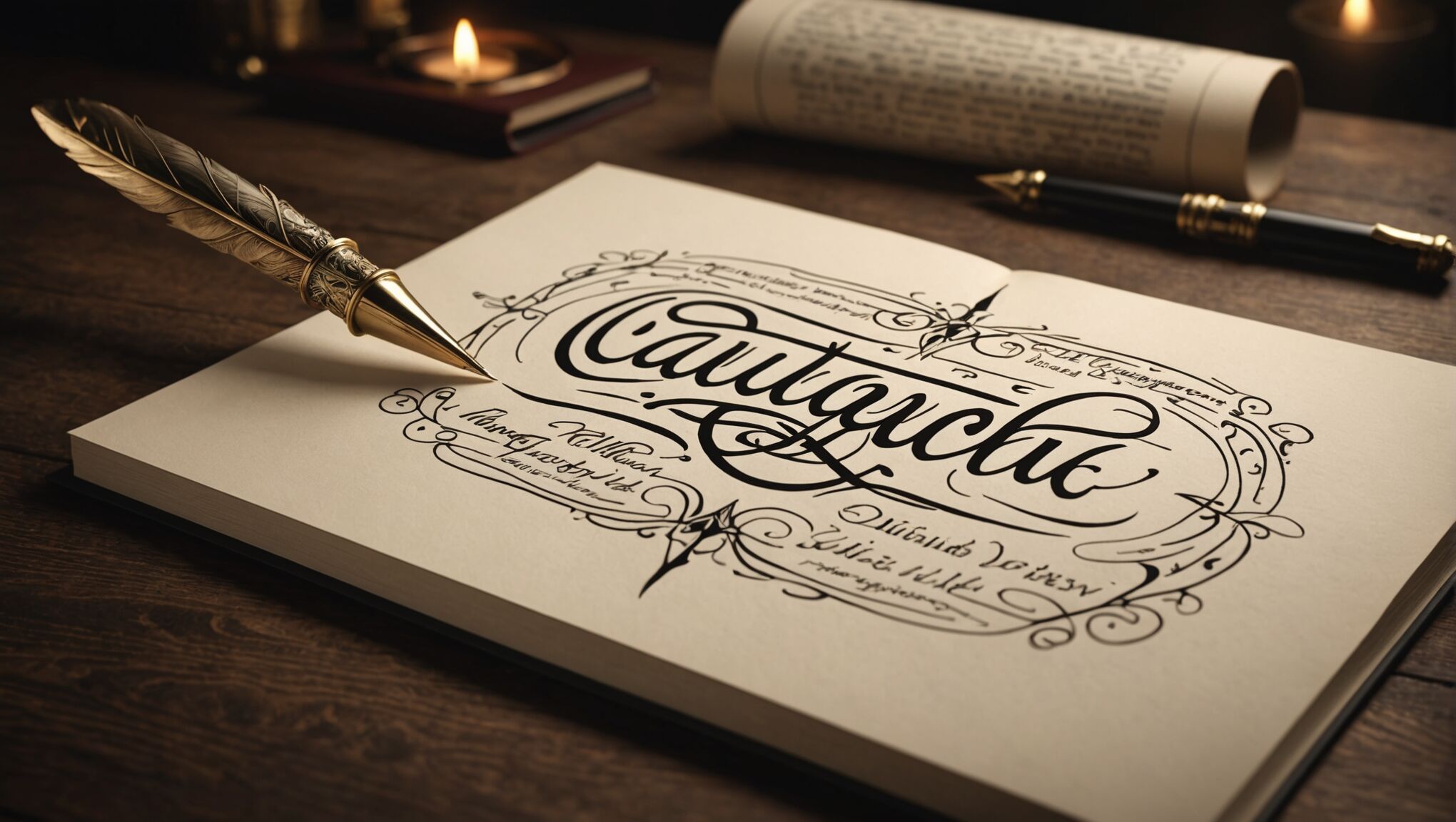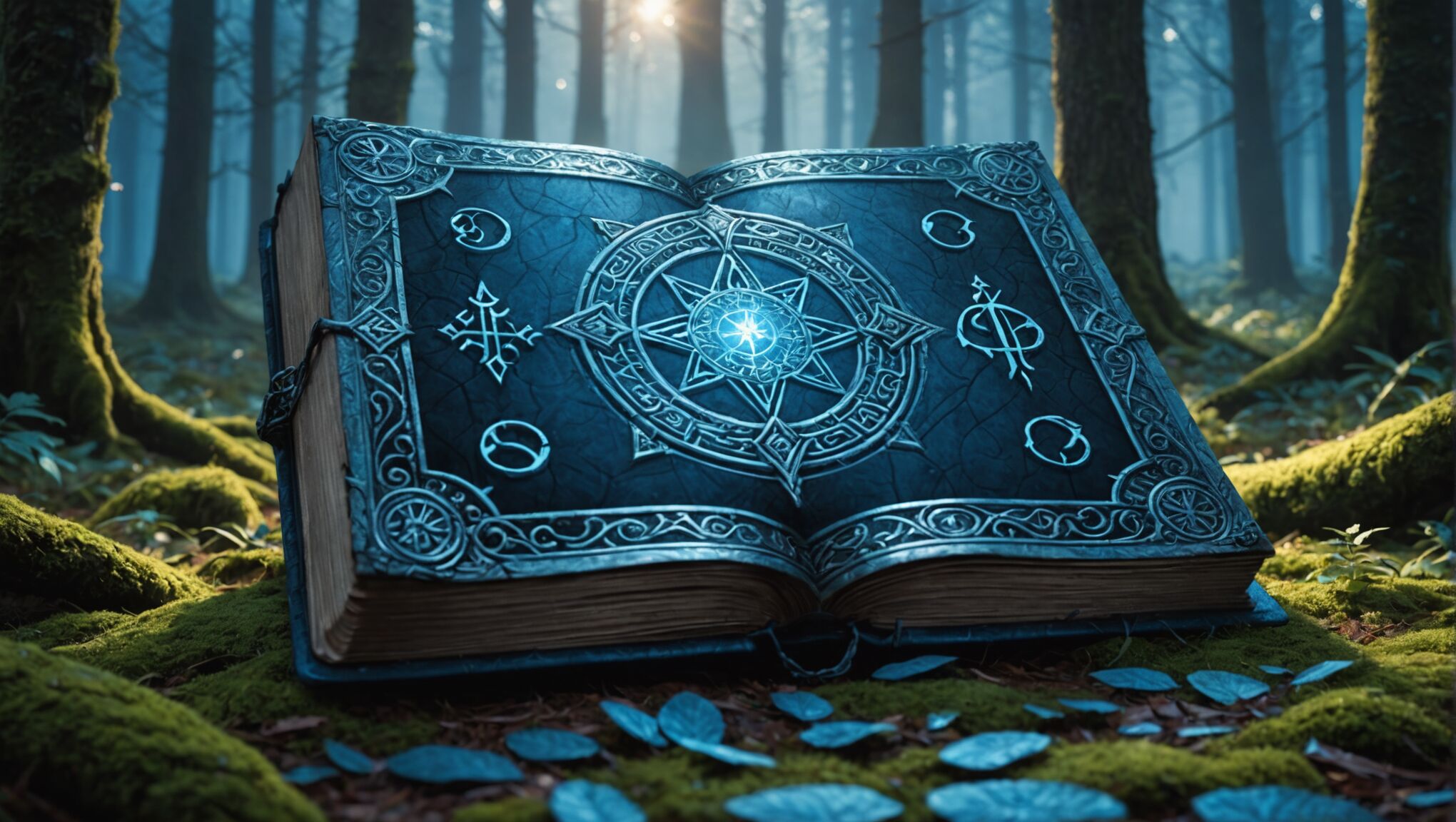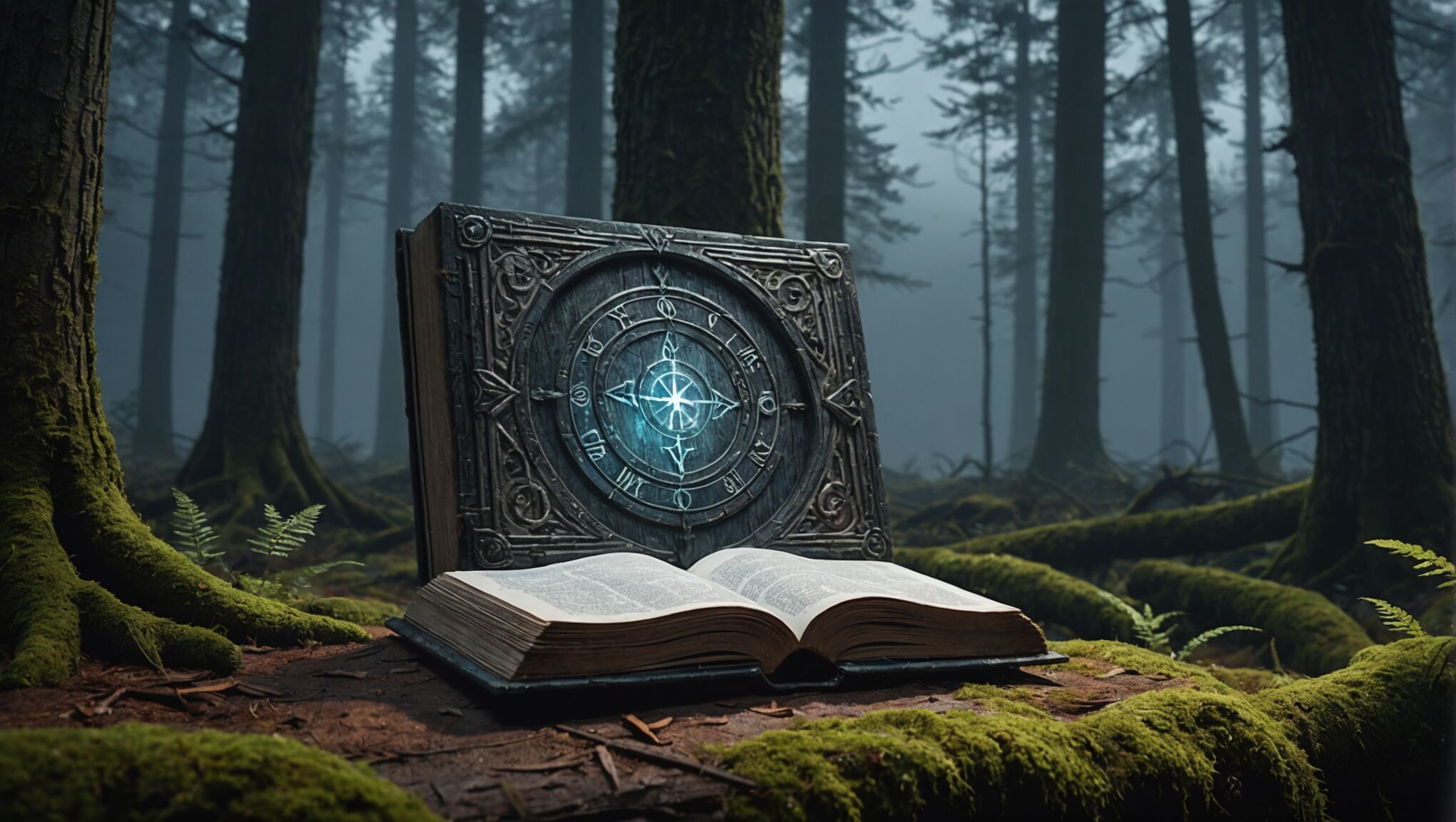blog
How to Design a Timeless Fantasy Book Cover
Fantasy book covers are a gateway to magical worlds, and they typically feature several key elements that captivate potential readers. Atmospheric landscapes often dominate the background, setting the stage for the story’s universe. These might include misty forests, towering castles, or otherworldly vistas that hint at the adventure within. Central to many fantasy covers is the protagonist or a significant character, often depicted in a heroic pose or engaged in action. This character representation gives readers a visual connection to the story’s hero. Magical elements are crucial, whether subtle or overt, such as glowing amulets, mystical creatures, or swirling energy patterns. These elements immediately signal the fantasy genre to browsers. Weapons and artifacts relevant to the plot frequently appear, from ornate swords to ancient tomes, providing clues about the story’s focus. “A well-designed cover is a promise to the reader,” as many publishing professionals assert, and in fantasy, this promise often includes the integration of unique typefaces that complement the overall design while remaining legible. Borders and framing devices can add an extra layer of mystique, sometimes incorporating intricate patterns or motifs that reflect the book’s cultural or mythological inspirations. Lastly, the strategic use of light and shadow can create depth and drama, drawing the eye to key focal points and enhancing the cover’s overall impact.
Choosing the right color palette
 Color plays a pivotal role in setting the tone and atmosphere of a fantasy book cover. The right palette can evoke specific emotions, hint at the story’s themes, and create a visual allure that captures readers’ attention. When selecting colors for a fantasy cover, consider the mood you want to convey. Dark, rich hues like deep purples, midnight blues, and forest greens often suggest mystery and magic. In contrast, brighter tones such as fiery reds, golden yellows, and ethereal whites can represent hope, power, or divine elements.
Color plays a pivotal role in setting the tone and atmosphere of a fantasy book cover. The right palette can evoke specific emotions, hint at the story’s themes, and create a visual allure that captures readers’ attention. When selecting colors for a fantasy cover, consider the mood you want to convey. Dark, rich hues like deep purples, midnight blues, and forest greens often suggest mystery and magic. In contrast, brighter tones such as fiery reds, golden yellows, and ethereal whites can represent hope, power, or divine elements.
It’s crucial to understand color psychology and its impact on perception. For instance, blue can evoke feelings of serenity or sadness, while red might symbolize passion or danger. The combination of colors is equally important. Complementary colors (those opposite each other on the color wheel) can create striking contrasts that make elements pop, while analogous colors (those adjacent on the wheel) can provide harmony and cohesion.
“Color is a power which directly influences the soul,” said Wassily Kandinsky, and this principle applies strongly to book cover design.
Consider the genre subcategories within fantasy when choosing your palette. High fantasy might benefit from regal colors like gold and purple, while urban fantasy could incorporate grittier, more muted tones. For covers featuring magical elements, iridescent or metallic accents can add a touch of otherworldliness.
The use of gradients can create depth and dimension, mimicking the play of light in fantastical landscapes. A subtle shift from dark to light can guide the eye across the cover, emphasizing key elements of the design. However, be cautious not to overuse gradients, as they can sometimes appear dated if not executed skillfully.
Remember that color can also be used to create visual hierarchy. The most important elements of your cover, such as the title or main character, should stand out through strategic color choices. This can be achieved through contrast or by using a color that resonates throughout the design but is most prominent in key areas.
Lastly, consider the practical aspects of color selection. Ensure that your chosen palette translates well to both print and digital formats. Some vibrant colors that look stunning on screen may lose their impact when printed. Additionally, think about how your cover will appear as a thumbnail image on online bookstores. The colors should remain distinctive and attractive even at a small scale.
By carefully selecting and combining colors, you can create a fantasy book cover that not only captures the essence of the story but also stands the test of time, continuing to attract readers for years to come.
Selecting appropriate typography

Typography is a crucial element in fantasy book cover design, as it not only conveys the title and author’s name but also sets the tone for the entire work. When selecting fonts for a fantasy book cover, it’s essential to choose typefaces that reflect the story’s atmosphere and era while remaining legible. Serif fonts often lend a classic, timeless feel, making them suitable for traditional fantasy settings. On the other hand, sans-serif fonts can provide a more modern or streamlined look, which might be appropriate for contemporary or urban fantasy.
Consider using decorative fonts sparingly for titles, as they can add a touch of magic and intrigue. However, be cautious not to sacrifice readability for style. A good rule of thumb is to use no more than two or three different fonts on a single cover to maintain consistency and avoid visual clutter. For author names and subtitles, a simpler, complementary font often works best to ensure clarity.
Tailor covers to various fantasy subgenres. Learn how.
The size and placement of text are equally important. The title should be prominent and easily readable even at thumbnail size, as many readers will first encounter the book online. Experiment with different layouts, such as stacking words or integrating text with visual elements, to create a harmonious composition. Pay attention to the kerning and leading of your text to ensure proper spacing between letters and lines, which can significantly impact the overall aesthetic.
Color and texture can enhance typography’s impact. Consider using metallic effects, embossing, or subtle gradients to make the text pop against the background. However, always prioritize contrast to maintain legibility. Text that disappears into the artwork, no matter how beautifully designed, fails in its primary purpose of communication.
Custom lettering or calligraphy can add a unique touch to your fantasy book cover, creating a signature look that sets your work apart. This approach can be particularly effective for series branding, establishing a recognizable style across multiple books. If opting for custom typography, ensure it aligns with the overall theme and doesn’t overshadow other cover elements.
Consider the emotional response your typography evokes. Flowing, script-like fonts might suggest romance or elegance, while bold, angular typefaces could imply action or conflict. The weight of the font can also convey meaning—heavier fonts often suggest importance or intensity, while lighter weights can imply delicacy or mystery. By thoughtfully selecting and applying typography, you can create a fantasy book cover that not only catches the eye but also resonates with the essence of the story within.
Incorporating symbolic imagery
Symbolic imagery plays a crucial role in fantasy book cover design, serving as a visual shorthand for the themes, characters, and magical elements within the story. When incorporating symbolic elements, it’s essential to strike a balance between intriguing potential readers and avoiding clichés.
Start by identifying key symbols that represent the core concepts of your fantasy narrative. These could include magical artifacts, mythical creatures, or abstract representations of power or conflict. For instance, a glowing amulet might symbolize a source of magic, while a broken crown could represent a fallen kingdom or a power struggle.
Consider the cultural and historical context of your fantasy world when selecting symbols. If your story draws inspiration from specific mythologies or historical periods, incorporate elements that resonate with those influences. This not only adds depth to your cover design but also helps to immediately convey the setting to knowledgeable readers.
The placement of symbolic elements is crucial. They should be integrated seamlessly into the overall composition, rather than appearing as afterthoughts. Use these symbols to guide the viewer’s eye across the cover, creating a visual narrative that complements the title and other design elements.
Scale and proportion can dramatically affect the impact of symbolic imagery. A small, intricate symbol might invite closer inspection and hint at hidden depths within the story. Conversely, a large, dominating symbol can create an immediate and powerful impression, setting the tone for an epic tale.
Color plays a significant role in enhancing the meaning of symbols. For example, a phoenix rendered in vibrant reds and oranges immediately evokes themes of rebirth and fire magic, while the same creature in cool blues might suggest transformation or ice powers.
Consider using layering and subtle details to add depth to your symbolic elements. This can create a sense of mystery and encourage potential readers to look closer, engaging them with the cover design. For instance, a seemingly simple tree might, upon closer inspection, reveal faces hidden in its bark or magical creatures among its branches.
Avoid overloading the cover with too many symbols, as this can lead to visual clutter and confusion. Instead, focus on a few key elements that best represent the essence of your story. Remember, the goal is to intrigue readers and give them a taste of the world within, not to summarize the entire plot on the cover.
Abstract symbols can be particularly effective in fantasy cover design, as they allow for interpretation and spark curiosity. Geometric shapes, intricate patterns, or even constellations can be used to suggest magical systems or otherworldly concepts without being overly literal.
Lastly, ensure that your symbolic imagery aligns with your target audience’s expectations and preferences. What resonates with young adult fantasy readers might differ from what appeals to fans of grimdark or epic fantasy. Research current trends in your specific subgenre, but also strive to create something unique that will stand out on the shelves or in online listings.
By thoughtfully incorporating symbolic imagery, you can create a fantasy book cover that not only captures the essence of your story but also stands as a timeless piece of art that continues to intrigue and attract readers for years to come.
Balancing text and visual elements
 Achieving the right balance between text and visual elements on a fantasy book cover is crucial for creating an impactful and effective design. The goal is to create a harmonious composition that captures attention while conveying essential information.
Achieving the right balance between text and visual elements on a fantasy book cover is crucial for creating an impactful and effective design. The goal is to create a harmonious composition that captures attention while conveying essential information.
Start by considering the hierarchy of elements. The title should be the most prominent textual element, followed by the author’s name. Visual elements should support and enhance these key pieces of information rather than overshadowing them. Think of the cover as a visual puzzle where each piece must fit perfectly to create a cohesive whole.
Negative space plays a vital role in balancing text and imagery. Don’t be afraid to leave some areas of the cover empty. This breathing room can help guide the viewer’s eye and prevent the design from feeling cluttered or overwhelming. Remember, sometimes less is more, especially when dealing with complex fantasy elements.
Consider the interplay between text and visuals. Text can be integrated into the imagery in creative ways, such as having it interact with landscape elements or magical effects. This integration can create a sense of depth and immersion, making the cover feel more dynamic and engaging.
The placement of text is critical. Experiment with different layouts, keeping in mind how the eye naturally moves across the cover. The top third of the cover is often prime real estate for the title, as it’s where the eye is naturally drawn first. However, don’t be afraid to break conventions if it serves the overall design.
Color contrast between text and background is essential for readability. Ensure that your text stands out clearly against the artwork. If necessary, use techniques like drop shadows, outlines, or subtle glow effects to enhance legibility without compromising the design’s integrity.
Consider the emotional impact of your text-to-image ratio. A cover dominated by imagery might convey a sense of epic scale or immersive world-building, while one with more prominent text elements could emphasize the power of the story or the author’s brand.
Flexibility is key when designing for different formats. Your cover should work well both as a physical book and as a thumbnail image online. Test your design at various sizes to ensure that the balance remains effective across all platforms.
Think about how the cover will be perceived from a distance. The most crucial elements should be distinguishable even when the book is viewed from afar on a shelf. This often means simplifying complex visual elements and ensuring text is large and clear enough to be read easily.
Remember that balance doesn’t necessarily mean symmetry. Asymmetrical designs can be visually striking and draw attention, but they require careful composition to maintain a sense of equilibrium.
Finally, consider the genre expectations of your target audience. Fantasy readers often expect covers with rich, detailed artwork, but this shouldn’t come at the expense of clear, readable text. Strike a balance that respects genre conventions while still allowing your unique vision to shine through.
By carefully considering these factors, you can create a fantasy book cover that not only looks stunning but also effectively communicates the essence of your story to potential readers. The art of balancing text and visual elements is a skill that develops with practice and experimentation, so don’t be afraid to iterate and refine your design until you achieve the perfect harmony.
Creating a cohesive series design

When designing a series of fantasy books, creating a cohesive visual identity is paramount. This consistency helps readers instantly recognize books within the series and builds brand recognition for the author. Start by establishing a consistent layout framework that can be applied across all covers in the series. This might include a specific placement for the title, author name, and series logo or number.
Color schemes play a crucial role in series design. Consider developing a signature palette that runs throughout the series, with slight variations for each book. This could involve using different shades of the same color family or reserving certain colors for specific elements across all covers. For example, you might use a consistent background color with varying accent colors for each installment.
Typography is another key element in maintaining series cohesion. Choose a distinctive font for the series title and author name, and use it consistently across all books. You may want to vary the color or treatment of the text for individual titles, but the font itself should remain constant to maintain visual continuity.
Incorporate a recurring visual motif or icon that appears on every cover in the series. This could be a magical symbol, a stylized graphic element, or even a particular framing device. This repeated element serves as a visual anchor, tying the series together while allowing for individual book variations.
When designing individual covers within the series, aim to strike a balance between consistency and uniqueness. Each cover should stand on its own as a compelling design while clearly belonging to the larger series. This can be achieved by varying the central imagery or character focus for each book while maintaining the established framework and design elements.
Consider how the covers will look when displayed together. They should complement each other and create a visually appealing set when placed side by side on a bookshelf or in an online storefront. This might involve creating a visual progression or theme that evolves across the series.
If the series spans different story arcs or sub-series, you may want to create distinct visual identities for each while still maintaining an overarching series style. This can be done by subtly shifting color schemes or introducing new design elements that distinguish one arc from another without breaking the overall series cohesion.
Remember to future-proof your design choices. As series can often expand beyond initial plans, create a flexible system that allows for additional books to be added seamlessly. This might involve designing templates or guidelines that can be easily adapted for new installments without losing the established series identity.
Lastly, consider how your series design will translate across different formats, including hardcover, paperback, and digital editions. Ensure that the key elements of your cohesive design remain effective and recognizable across all these formats to maintain a strong series identity regardless of how readers encounter the books.

